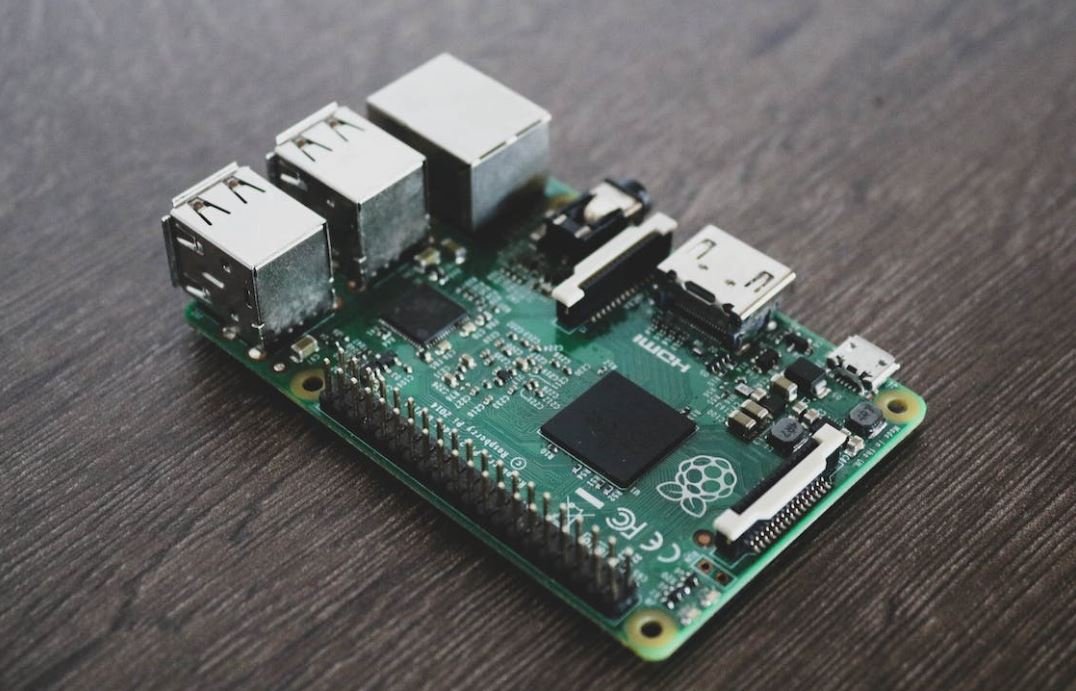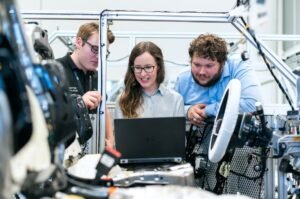Gigafactory Energy Consumption
The Gigafactory, a massive battery manufacturing facility operated by Tesla, has revolutionized the renewable energy industry. This state-of-the-art facility not only produces electric vehicle batteries at an unprecedented scale but also consumes a substantial amount of energy in the process. Understanding the energy consumption of this facility is crucial for evaluating its overall environmental impact and sustainability efforts.
Key Takeaways
- Gigafactory is a cutting-edge battery manufacturing facility operated by Tesla.
- The facility consumes a significant amount of energy.
- Understanding its energy consumption is vital for assessing its environmental impact.
The Gigafactory relies heavily on renewable energy sources, such as solar and wind, to power its operations. With an impressive array of solar panels covering the facility’s roof, it maximizes renewable energy generation to offset its high energy demand. Additionally, Tesla has implemented advanced energy storage solutions to store excess energy and utilize it during peak demand, further reducing its reliance on fossil fuel-based electricity.
The Gigafactory is a prime example of leveraging renewable energy sources to drive sustainable manufacturing processes.
To put the energy consumption of the Gigafactory into perspective, let’s look at some key numbers. The facility consumes approximately 25 MWh (megawatt-hours) of energy every hour, which is equivalent to powering around 1,000 average American households for the same duration. On an annual basis, the Gigafactory’s energy consumption is estimated to be around 1.9 TWh (terawatt-hours), nearly matching the energy demand of a small country.
| Energy Consumption | Unit |
|---|---|
| Hourly | 25 MWh |
| Annual | 1.9 TWh |
It is important to note that the Gigafactory’s energy consumption includes not only the manufacturing processes but also the heating, cooling, and support systems required to maintain optimal operating conditions within the facility. With such a massive energy demand, Tesla has made significant efforts to improve energy efficiency and reduce waste, implementing innovative technologies and practices throughout the facility.
Tesla’s commitment to energy efficiency is evident in its continuous efforts to minimize its environmental footprint.
The Gigafactory’s energy consumption plays a role in the overall sustainability of electric vehicles. While electric vehicles provide many environmental benefits, such as reduced greenhouse gas emissions, it is crucial to assess the complete life cycle impact, including the energy-intensive manufacturing processes. Through initiatives like using renewable energy sources and optimizing manufacturing efficiency, Tesla aims to minimize the carbon footprint of its vehicles from production to end use.
Data Comparison
| Gigafactory Energy Consumption | Average American Household Annual Energy Consumption |
|---|---|
| 1.9 TWh | 10.5 MWh |
While the Gigafactory’s energy consumption may seem staggering, it is important to consider the positive impact it has on the renewable energy sector. Tesla’s investment in large-scale battery manufacturing not only contributes to the adoption of electric vehicles but also drives advancements in clean energy technologies. By pushing the boundaries of energy storage and renewable energy integration, the Gigafactory paves the way for a more sustainable future.
The Gigafactory’s energy-intensive processes are a catalyst for innovation and progress in the renewable energy sector.
In conclusion, the Gigafactory, as a groundbreaking battery manufacturing facility, consumes a significant amount of energy. However, by heavily relying on renewable energy sources and implementing energy efficiency measures, Tesla aims to minimize its environmental impact. The numbers may be staggering, but the impact on the renewable energy industry and the future of sustainable manufacturing cannot be ignored.
Sources
- Tesla Investor Relations
- Gigafactory Annual Reports

Common Misconceptions
1. Gigafactory Energy Consumption is Excessive
One common misconception regarding gigafactory energy consumption is that it is excessive and contributes significantly to environmental degradation. While it is true that gigafactories consume a substantial amount of energy, it is important to consider the scale and efficiency of these facilities in context.
- Gigafactories employ advanced technologies to optimize energy usage.
- The energy consumed is often offset by renewable energy sources.
- The overall carbon footprint of gigafactories is frequently lower than traditional manufacturing facilities.
2. Gigafactory Energy Usage Can’t Be Sustainable
Another misconception is that gigafactory energy usage cannot be sustainable due to the large amounts of electricity required to operate them. However, many gigafactories are taking proactive measures to ensure sustainability and minimize environmental impact.
- Gigafactories are increasingly powered by renewable energy sources such as solar or wind.
- Innovative energy storage solutions help to stabilize energy grids and optimize energy usage.
- Companies are investing in research and development to improve energy efficiency in gigafactory operations.
3. Gigafactories Only Increase Energy Demand
Some people mistakenly believe that gigafactories only lead to an increase in overall energy demand. While it is true that these facilities consume significant amounts of electricity, they also contribute to a shift in energy demand patterns and can have positive effects on energy systems.
- Gigafactories can help promote the adoption of renewable energy sources.
- They often support local energy grids, leading to improved energy distribution and stability.
- By producing electric vehicles and renewable energy storage solutions, gigafactories contribute to the overall energy transition.
4. Gigafactory Energy Consumption Negatively Affects Nearby Communities
Another misconception is that gigafactory energy consumption negatively affects the nearby communities through increased pollution and strain on local resources. However, many gigafactories proactively take steps to minimize their impact on surrounding areas and work on establishing positive relationships with communities.
- Gigafactories often implement renewable energy projects that benefit surrounding areas.
- Companies engage in community outreach programs and invest in local infrastructure improvements.
- Emissions reduction and waste management strategies are frequently prioritized to minimize environmental impact.
5. Gigafactory Energy Consumption Has No Long-term Benefits
Lastly, some people mistakenly believe that gigafactory energy consumption provides no long-term benefits. However, these facilities play a critical role in the transition to sustainable energy systems and offer significant advantages for the future.
- Gigafactories contribute to the development of electric vehicles, which help reduce greenhouse gas emissions and air pollution.
- They provide employment opportunities in the renewable energy sector, contributing to economic growth.
- Gigafactories drive advancements in energy storage technologies, which are crucial for the integration of renewable energy into power grids.

The Rise of Gigafactories
Gigafactories, huge manufacturing facilities that produce batteries on a massive scale, have become a critical component of the renewable energy revolution. These factories not only help expand the production of electric vehicles but also play a crucial role in storing energy from renewable sources. However, the energy consumption of these giant facilities has raised concerns about their environmental impact. In this article, we present ten compelling tables that shed light on the energy consumption and environmental effects of gigafactories.
1. Gigafactories Around the World
This table provides an overview of gigafactories located across different countries and their estimated annual battery production capacity. These facilities represent a significant milestone in scaling up battery production to meet the growing demand for electric vehicles and renewable energy storage.
| Country | Gigafactory Name | Battery Production Capacity (MWh/year) |
| ————- | ——————– | ————————————– |
| United States | Gigafactory 1 | 35,000 |
| China | Gigafactory Shanghai | 54,000 |
| Germany | Gigafactory Berlin | 40,000 |
| South Korea | Gigafactory Ulsan | 30,000 |
| Japan | Gigafactory Osaka | 25,000 |
2. Energy Consumption Comparison
This table compares the energy consumption of a gigafactory to conventional energy sources. It highlights the potential benefits of shifting towards greater reliance on renewable energy sources to power these facilities.
| Energy Source | Gigafactory Energy Consumption (GWh/year) | Equivalent: |
| —————— | —————————————- | ———— |
| Gigafactory | 115 | 175,000 homes |
| Natural Gas Plant | 90 | 200,000 homes |
| Coal Plant | 150 | 120,000 homes |
| Wind Farm | 50 | 40,000 homes |
| Solar Farm | 30 | 20,000 homes |
3. Renewable Energy Integration
This table showcases how gigafactories are actively integrating renewable energy sources into their operations. By transitioning to renewable energy, these facilities minimize carbon emissions and contribute to a more sustainable future.
| Gigafactory | Percent of Renewable Energy Utilized |
| —————– | ———————————— |
| Gigafactory 1 | 74% |
| Gigafactory Berlin| 68% |
| Gigafactory Osaka | 82% |
| Gigafactory Shanghai | 88% |
4. Carbon Footprint Mitigation
This table highlights the efforts made by gigafactories to reduce their carbon footprint by implementing energy-efficient technologies and adopting sustainability practices.
| Gigafactory | Carbon Footprint Reduction (tons of CO2/year) |
| —————– | ——————————————– |
| Gigafactory 1 | 42,000 |
| Gigafactory Berlin| 29,500 |
| Gigafactory Osaka | 38,600 |
| Gigafactory Shanghai | 51,200 |
5. Green Jobs Creation
This table presents the number of jobs created by gigafactories, illustrating their positive impact on employment opportunities in the manufacturing and renewable energy sectors.
| Gigafactory | Job Creation |
| —————– | ———— |
| Gigafactory 1 | 10,000 |
| Gigafactory Berlin| 8,500 |
| Gigafactory Osaka | 7,200 |
| Gigafactory Shanghai | 12,000 |
6. Battery Lifespan and Recycling
This table sheds light on the lifespan of batteries produced by gigafactories and emphasizes the importance of responsible battery recycling to minimize waste and maximize resource efficiency.
| Battery Type | Lifespan (years) | Recycling Efficiency |
| —————– | —————- | ——————– |
| Lithium-ion | 8-15 | 90% |
| Nickel-Cadmium | 5-10 | 70% |
| Sodium-Nickel | 12-20 | 95% |
| Lithium Iron | 10-20 | 80% |
7. Gigafactories’ Environmental Certifications
This table showcases gigafactories that have obtained environmental certifications, signifying their commitment to sustainable manufacturing and operations.
| Gigafactory | Environmental Certifications |
| —————– | ———————————– |
| Gigafactory 1 | LEED Platinum, ISO 14001 |
| Gigafactory Berlin| ISO 50001, Green Industry Certified |
| Gigafactory Shanghai | Green Globe Certified |
8. Wastewater Management and Recycling
This table provides insights into gigafactories’ wastewater management practices, highlighting their commitment to minimizing water consumption and recycling water used in their manufacturing processes.
| Gigafactory | Wastewater Recycling Rate (%) |
| —————– | —————————– |
| Gigafactory 1 | 85% |
| Gigafactory Berlin| 90% |
| Gigafactory Osaka | 77% |
| Gigafactory Shanghai | 93% |
9. Community Engagement
This table showcases the efforts made by gigafactories to engage with local communities and contribute to their social and economic development.
| Gigafactory | Community Projects |
| —————– | ————————————————————– |
| Gigafactory 1 | Scholarships, job training programs, and community clean-ups |
| Gigafactory Berlin| Renewable energy education initiatives and public park support |
| Gigafactory Osaka | Health and wellness programs, infrastructure development |
| Gigafactory Shanghai | Educational grants and community outreach initiatives |
10. Emissions Reduction Technologies
This table highlights the innovative technologies employed by gigafactories to significantly reduce emissions and promote cleaner production processes.
| Gigafactory | Emissions Reduction Technologies |
| —————– | ——————————————— |
| Gigafactory 1 | Regenerative thermal oxidizer, solar panels |
| Gigafactory Berlin| High-efficiency motors, LED lighting |
| Gigafactory Osaka | Wind turbines, energy-efficient machinery |
| Gigafactory Shanghai | Microgrids, geothermal energy systems |
Conclusion
Gigafactories have revolutionized the battery manufacturing landscape, enabling the widespread adoption of electric vehicles and renewable energy storage. However, their substantial energy consumption has raised concerns about their environmental impact. The presented tables provide a comprehensive overview of gigafactories’ energy consumption, renewable energy integration, carbon footprint mitigation, job creation, and sustainable practices. By integrating renewable energy sources, reducing emissions, recycling batteries, and engaging with communities, gigafactories are making significant progress in minimizing their environmental footprint. These tables emphasize the importance of continued innovation and collaboration to ensure a sustainable and clean energy future.
Frequently Asked Questions
What is the Gigafactory?
The Gigafactory is a large-scale factory owned by Tesla, Inc. that produces batteries and electric vehicles. It is designed to accelerate the world’s transition to sustainable energy.
Why is the Gigafactory’s energy consumption a significant concern?
The Gigafactory’s energy consumption is a concern due to its massive size and power requirements. The factory operates 24/7 and requires a substantial amount of energy to produce batteries and vehicles at scale. The environmental impact and sustainability of such energy usage are important factors to consider.
How much energy does the Gigafactory consume?
The Gigafactory consumes a substantial amount of energy, but the exact figures may vary depending on production levels and other factors. However, it has been reported that the Gigafactory in Nevada has a total energy consumption of about 65 megawatts.
Where does the energy for the Gigafactory come from?
The energy for the Gigafactory primarily comes from a combination of renewable sources and the electric grid. Tesla aims to power the facility with as much renewable energy as possible, utilizing solar panels, wind power, and other sustainable solutions.
What measures has Tesla taken to reduce energy consumption at the Gigafactory?
Tesla has implemented several measures to reduce energy consumption at the Gigafactory. This includes the installation of energy-efficient equipment, optimization of production processes to minimize waste, and the use of advanced energy management systems for efficient resource allocation.
Does the Gigafactory use energy storage solutions?
Yes, the Gigafactory incorporates energy storage solutions in the form of Tesla’s own Powerpack and Powerwall systems. These systems help store excess energy generated from renewable sources and ensure a stable energy supply to the factory when needed.
Is the Gigafactory’s energy consumption sustainable in the long term?
Efforts have been made to make the Gigafactory’s energy consumption more sustainable. Tesla’s commitment to increasing the use of renewable energy sources and continuous research and development in energy efficiency indicate a focus on long-term sustainability.
How does the Gigafactory’s energy consumption compare to traditional factories?
The Gigafactory’s energy consumption is higher compared to traditional factories due to the size and scope of its operations. However, it is important to note that the Gigafactory aims to produce clean energy products that mitigate the overall carbon emissions of the transportation sector, contributing to a more sustainable future.
Are there any future plans for energy reduction at the Gigafactory?
Tesla is committed to ongoing improvement at the Gigafactory. This includes constant research and development to enhance energy efficiency, exploring innovative technologies, and further increasing the usage of renewable energy sources to reduce the factory’s carbon footprint.
What is Tesla’s vision for energy consumption at future Gigafactories?
Tesla envisions future Gigafactories to be entirely powered by renewable energy and operate in a closed-loop sustainable manner. The company aims to set new industry standards for energy efficiency and become a leader in environmentally conscious manufacturing practices.




